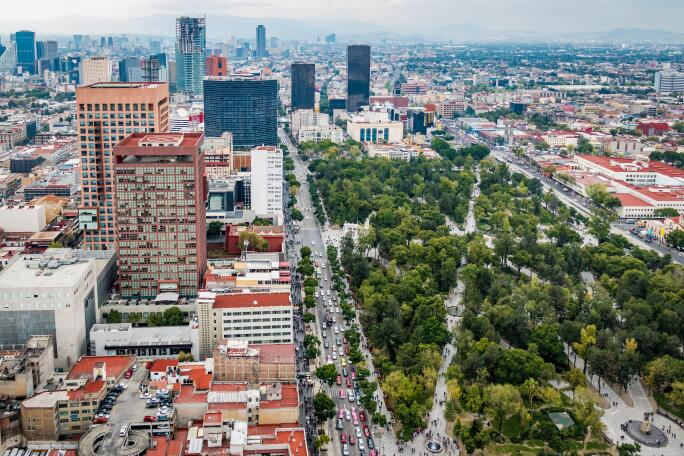Celebrating art’s unique power to promote understanding and progress across cultures, Sotheby’s and Citi Private Bank are partnering to present 5 episodes of Most Famous Artworks. In this episode, explore how Diego Rivera’s late masterpiece gave a century of tumultuous history to the fine diners of Mexico City.
In 1946 Diego Rivera accepted a new commission: a mural for the restaurant of the majestic art deco Del Prado Hotel in Mexico City. By this point Rivera had become a much-loved godfather of Mexico’s artistic and political worlds, a folk hero of sorts who represented the Socialist ideals of Mexico in the mid-20th century.


His new work, the vast mural Sueño de una Tarde Dominical en la Alameda Central (which translates as Dream of a Sunday Afternoon in the Alameda Central), 1946–1947, was set to combine personal and historical narratives. While drawing on his childhood and his love for Frida Kahlo, the work was largely a panorama of the usual – and unusual – suspects of Mexico’s storied past. And it was all for the consideration of the great and good as they sat down to dinner.

Rivera was to the mural what Miles Davis was to the trumpet. He made the form his own, riffing on the possibilities opened up by the monumental scale, blending traditional motifs with Modernist concerns. Post-revolution, Mexican authorities embraced the mural as the defining art-form of its time, a combination of folk art, propaganda and personal expression.
Dream of a Sunday Afternoon in the Alameda Central is a vast mural, filled with characters who define Mexico's complex and turbulent history, shown promenading through Alameda central park. It tells the story chronologically, beginning on the left with the subjugation of Mexico's indigenous population, and moving through the years of Spanish rule, a bloody war of independence, decades of dictatorship, the revolution of the 1910s, to finally, the stability of the mid 20th century.
Famous and infamous faces are tucked into every corner of the scene. Conquistador Hernán Cortés stands at the far left, while dictatorial president Porfirio Diaz stands toward the center, above the angel. Facing viewers in the foreground is La Calavera Catrina, "the dapper skeleton," a satirical portrait of Mexico's vain turn-of-the-century elite. She was the enigmatic creation of the printmaker José Guadalupe Posada, the man in the bowler hat to her right. To her left, a young boy with a bird handle umbrella is revealed to be a young Rivera. Behind him stands his wife Frida Kahlo, one hand resting on his shoulder, the other holding a yin and yang object, a symbol of their special bond. The immense mural would remain in the hotel's restaurant for four decades, until a devastating earthquake struck the city in 1985. Astonishingly, the mural survived, and it was moved nearby to the Museo Mural Diego Rivera, where it continues to reside as an iconic tribute to the country's past.
Rivera was one of “Los Tres Grandes” – the big three master muralists, which also included José Clemente Orozco and David Alfaro Siqueiros. The trio were responsible for many works on public buildings that provided political and social messages of unification. “All art is propaganda,” observed Rivera. “The only difference is the kind of propaganda.” He saw the mural as a democratic expression. “Since art is essential for human life, it can’t just belong to the few. Art is the universal language and it belongs to all mankind.”
Works by Rivera are treasured by collectors. Along with those of his wife and muse Frida Kahlo, they remain some of the most sought after Latin American artworks to appear at auction. In 1995 Sotheby’s created a new auction record at the time for Rivera with the sale of Baile en Tehuantepec – a festive scene of dancers painted in 1928 – for $3.08 million. More recently, his late-career portrait of the film actress Matilde Palou achieved $2.4 million at Sotheby’s New York.
Learn More About Diego Rivera's Cinematic Muse, Matilde Palou
Rivera’s standing as the leading figure in Mexican muralism is also reflected at Sotheby’s, with several preparatory works relating to some his most celebrated public works creating high prices. These include a small-scale sanguine-on-paper study of a woman’s head – a preliminary drawing for Rivera’s first government-commissioned mural, Creation, 1922 – which sold in 2013 for $22,000.










